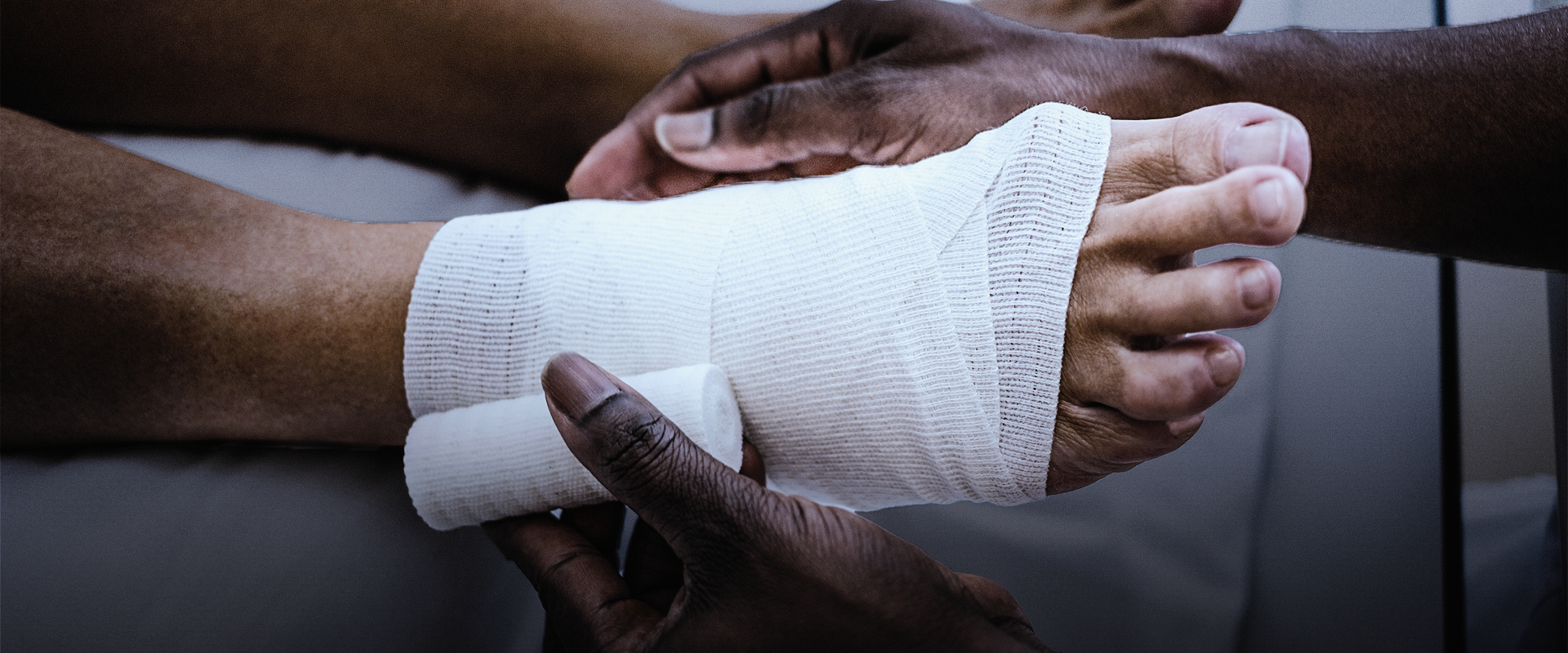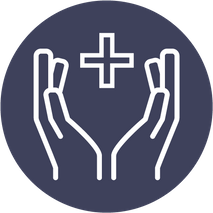
Physical Therapy for foot Injury
AT EVOLVE
Physical Therapy for foot Injury
HOW CAN PHYSICAL THERAPY ADDRESS FOOT INJURIES?
Foot injuries can result in pain, swelling, stiffness and difficulty walking. Conservative treatments like physical therapy are often recommended to address symptoms of a foot injury and to help the injury heal. Even when surgery is needed to treat an injured foot, physical therapists can help you recover and return to the activities you need and love to do. Physical therapists use their expertise in the human body, injury prevention and recovery to manage your symptoms and minimize chances of re-injury.
WHAT DOES PHYSICAL THERAPY FOR A FOOT INJURY LOOK LIKE?
Physical therapy for a foot injury aims to reduce symptoms of pain, instability or stiffness, restore normal strength and range of motion and facilitate return to full activities. In cases where a surgery has been performed, physical therapy is also indicated to achieve these same outcomes. My team of therapists and I will start by getting to know your concerns and goals and performing a thorough physical exam of your ankle, foot and leg to determine what areas we should target with our physical therapy interventions. Your therapist may apply manual therapy interventions to target joint and tissue mobility while also prescribing movements and exercises for strength, motor control and mobility to be performed in the home and the clinic.
HOW LONG WILL I NEED PHYSICAL THERAPY?
The duration of your physical therapy plan of care will vary depending on the type of foot injury, the severity of symptoms, if you are recovering from or planning to undergo surgery, as well as the types of activities you aim to resume. While full resolution of symptoms can take some time, you may begin to see some results right away. You should experience improvements in many symptoms such as pain, stiffness, and inflammation within a couple of weeks but returns in strength, flexibility and overall mobility may take longer. Achieving long-lasting results may take some time, but dedication to your program will not only help you achieve these results but will help to decrease the likelihood of symptoms recurring in the future.
COMMON SYMPTOMS OF A FOOT INJURY
Symptoms of a foot injury can develop suddenly in response to an acute injury or may develop more slowly over time. Common symptoms of a foot injury are as follows:
- Pain along the top, bottom, inside or outside of the foot or toes
- Weakness in the muscles that move the foot or ankle
- Difficulty moving the foot in one or more directions
- Pain with weight-bearing or moving the foot
- Symptoms that alter your gait pattern or cause you to limp
- Signs of joint or bony instability
- Numbness or tingling in the foot
- Signs of redness, warmth or swelling in the foot
ANATOMY OF A FOOT INJURY
To better understand physical therapy’s role in treating foot injuries, it helps to know a bit about the anatomy of the foot. Below are some foot anatomy facts:
- Each foot has 26 bones including the bones of the toes. Joints are formed where bones connect
- The foot can be divided into the hindfoot, midfoot and forefoot
- Each of these areas functions differently to help you stand, walk, run, etc
- Numerous ligaments connect the different bones and help to give the foot its shape and stability to withstand the forces of weight-bearing
- Nearly 30 muscles--some originating from the lower leg and others within the foot itself--work together to create the delicate balance of foot mobility and stability
- The plantar fascia is a thick layer of connective tissue running between the heel and ball of the foot. The plantar fascia: Helps create the arch of your foot, Acts as a shock absorber for the foot, Assists in changing the position of the foot as you walk
- Many nerves traverse the foot to supply motor and sensory information to the area
As you can see, the foot is complex. An injury can occur to any of these structures and identifying the correct injury is important for selecting the best treatment. There are two basic categories of foot injury–acute injuries that happen suddenly and those that develop more slowly over time. Below are some examples of how these injuries might occur:
Trauma-
- Dropping something on your foot
- Kicking something with your toe
- Twisting your foot or ankle while running
Overuse: repeating an activity or motion at a high volume
- Training for a marathon
- Performing box jumps in training
- Dancing ballet
Some injuries can be pinpointed by your physical therapist through careful clinical testing such as palpating for painful tissues, watching you walk or testing the muscles but in some cases imaging such as an x-ray, CT scan, ultrasound or MRI may be recommended to better visualize the tissues. Call to Schedule a Consultation! 1-718-258-3300
End Injury Progression
Physical Therapy for foot injury has proven to prevent injury, slow and even stop pain issues, improve performance, and reverse injury progression in many cases.
Relieve Pain
The movements used in this technique can target your entire body helping you to manage discomfort and pain during the course of your physical therapy treatments.
Improve Range of Motion
Posture awareness is an important area to focus on due to the fact that certain positions may cause you further discomfort and pain.
Restore Mobility
You can regain mobility and flexibility by taking part in the stretches and exercises as prescribed by your physical therapist.
How Long Will Physical Therapy for a Foot Injury Last?
If you decide to work with a physical therapist to help correct your foot injury, your entire treatment plan could consist of around 8-20+ different physical therapy sessions that will each last 60-90 minutes. Once you complete your customized physical therapy treatment plan, you will be able to continue to do the prescribed stretches and exercises utilized during your sessions yet in the comfort of your own home.
PHYSICAL THERAPY INTERVENTIONS FOR PIRIFORMIS SYNDROME
Conservative treatment for piriformis syndrome is the first line approach. This may include pharmacological treatments like NSAIDs or muscle relaxers and almost always physical therapy. Treatments for piriformis syndrome will always be individualized to address a patient’s impairments but several physical therapy interventions have been shown to be helpful in the management of this condition:
Lifestyle modification: lifestyle modification to reduce compression or irritation of the sciatic nerve can be helpful in reducing symptoms. Avoiding sitting for prolonged periods and daily stretching for example are often recommended.
Modalities: modalities like ultrasound, hot or cold therapy can be utilized to reduce inflammation, promote tissue healing and reduce pain and spasms which may be beneficial early on in a treatment session.
Manual therapy: addressing myofascial restrictions, trigger points and other restrictions in soft tissue around the glutes may be important to address your symptoms. Your therapist may perform these interventions using their hands or may employ other tools like dry needling, foam rolling or IASTM.
Stretching: stretching of the piriformis muscle can address muscle length issues and may help alter pain sensations and decrease muscle spasms to reduce compression on the sciatic nerve.
Lumbar and sacral spine-focused treatments: your therapist may direct their treatment to the spine itself if they feel this is a contributing factor to symptoms. Manual therapy techniques and exercises may be prescribed to address these impairments.
Muscle strength and performance exercises: if biomechanical factors are thought to be contributing to piriformis syndrome your therapist may prescribe a series of functional hip and gluteal strengthening exercises to ensure the small piriformis muscle isn’t trying to do the work of these larger muscles.
Functional training and restoration of activity: as underlying factors are addressed and symptoms subside, your therapist will incorporate more functional activities to ensure proper biomechanics, motor control and coordination when performing these activities. They will also educate you on how to return to your prior level of activity with an eye on prevention of piriformis syndrome in the future.
The symptoms of piriformis syndrome can surely be a pain but you should feel confident that the physical therapists at Evolve Physical Therapy know how to help. Call today to schedule an initial evaluation.
Mill Basin (located in Harbor Fitness)
6161 Strickland Ave
Brooklyn, NY 11234
Monday: 7am-8pm
Tuesday: 7am-8pm
Wednesday: 8am-5pm
Thursday: 7am-8pm
Friday: 8am-1pm
Park Slope (located in Harbor Fitness)
550 5th Ave.
Brooklyn, NY 11215
Monday: 9am-8pm
Tuesday: 8am-6pm
Wednesday: 9am-8pm
Thursday: 8am-6pm
Friday: 8am-3pm
Gravesend
372 Avenue U
Brooklyn, NY 11223
Monday-Thursday: 8am-8pm
Friday: 8am-3pm
Kings Highway
945 Kings Highway
Brooklyn, NY 11223
Monday-Wed.: 12pm-8pm
Ready to take the next step to a healthier you?
Contact Us Today!
PHYSICAL THERAPY FOR FOOT INJURY
Need Physical therapy for Foot Injury?
Let our caring and compassionate physical therapists help you with relieving pain while getting you back on your feet comfortably.
Call now to schedule your first PT consultation free of charge.
Call: 1-718-524-3915







